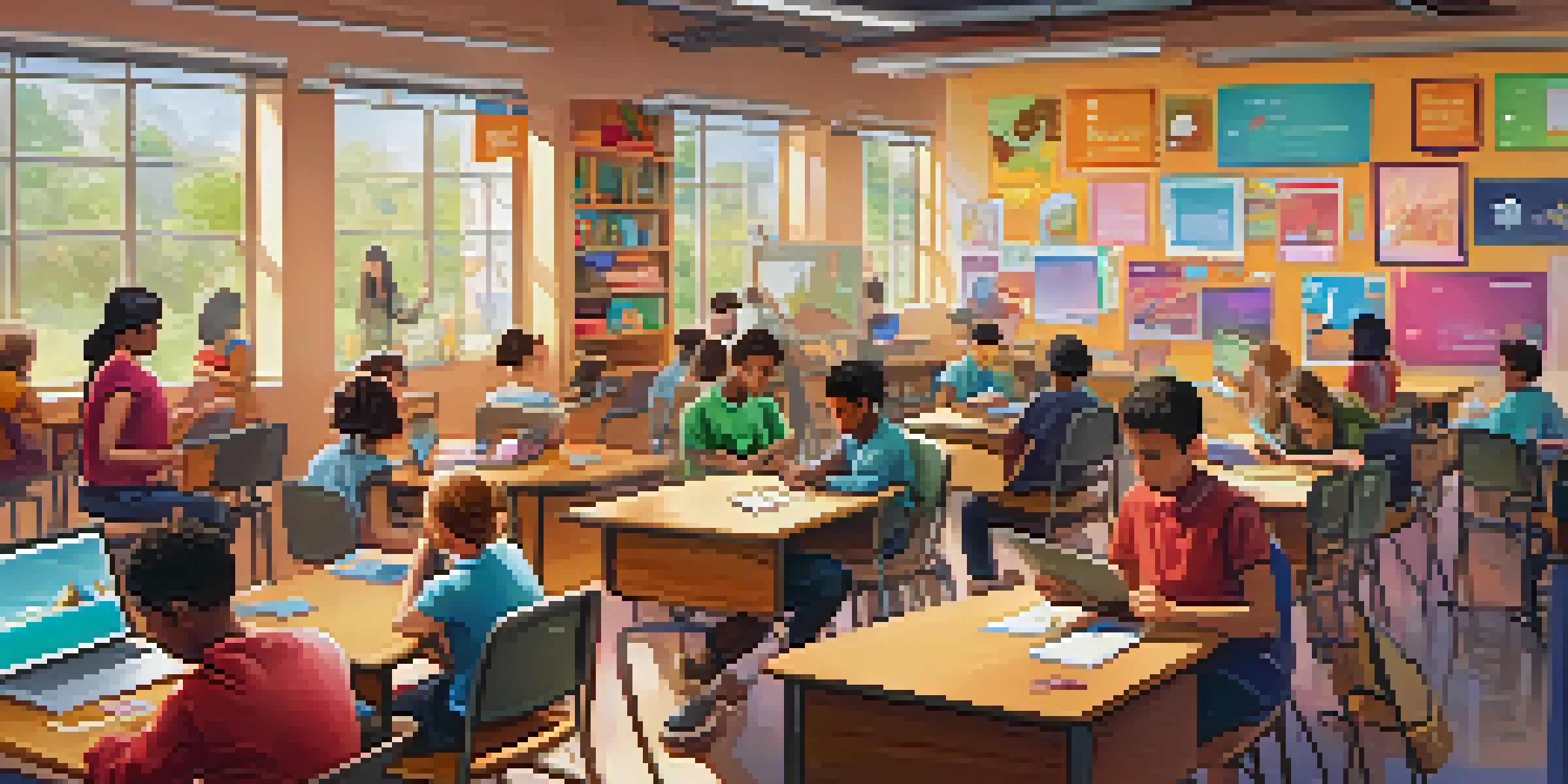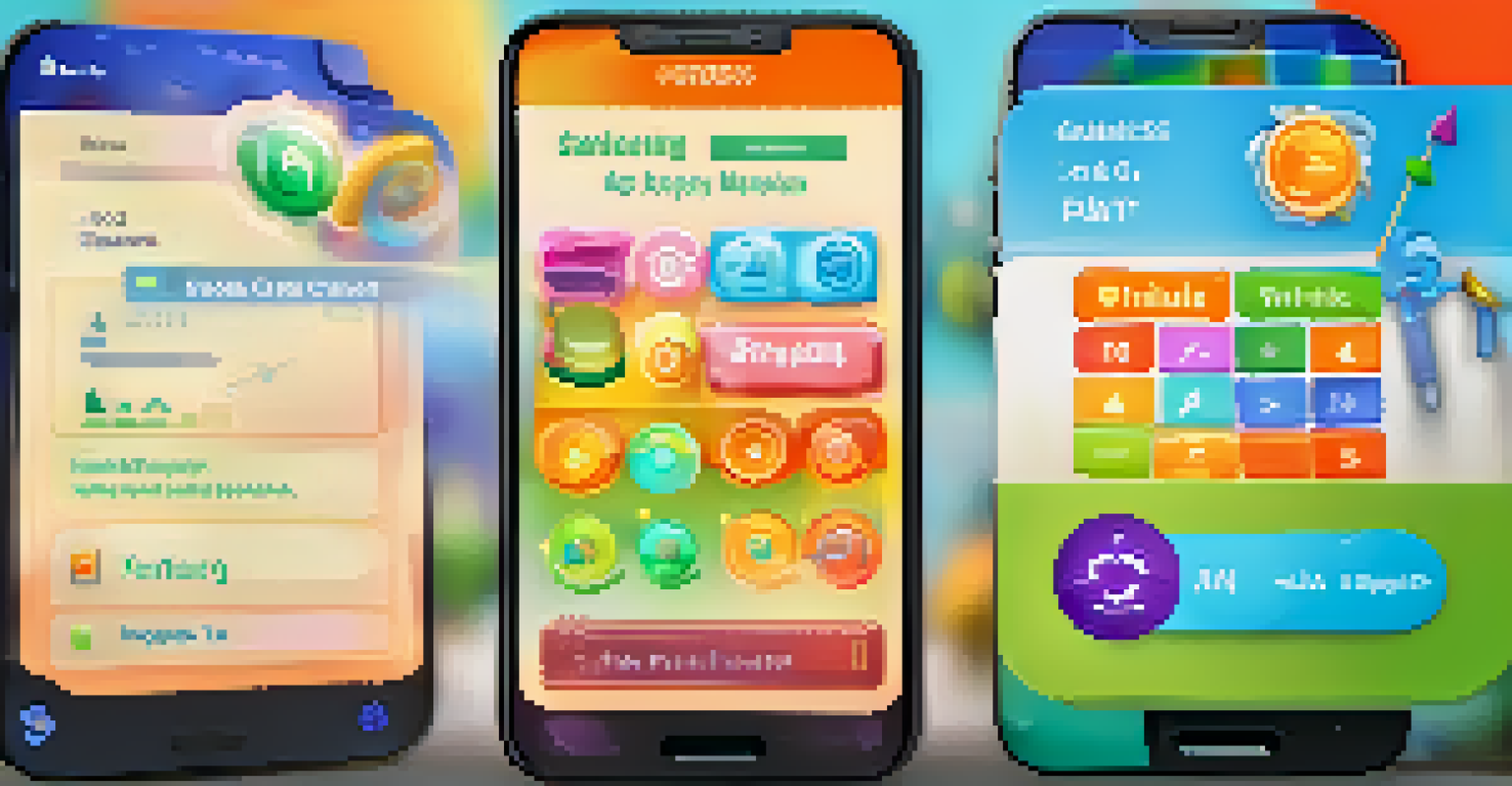Gamification and Learning: Neuroscience Behind Engagement

Understanding Gamification: What It Is and Why It Matters
Gamification is the integration of game-like elements in non-game contexts, especially in learning. Think of it as adding points, badges, and challenges to traditional education. This approach aims to boost motivation and engagement, making learning feel less like a chore and more like an adventure.
Gamification is the bridge between the world of education and the world of fun.
Why does this matter? Well, in a world where attention spans are dwindling, gamification offers a way to capture interest. By transforming mundane tasks into interactive experiences, learners are more likely to stay focused and committed.
Additionally, gamification aligns well with our innate desire for achievement. When learners can earn rewards or see their progress visually, it creates a sense of accomplishment that encourages further exploration.
The Neuroscience of Motivation: What Drives Us to Learn
Motivation is key in the learning process, and neuroscience gives us insights into its mechanics. Dopamine, often dubbed the 'feel-good' neurotransmitter, plays a crucial role in our desire to learn. When we achieve something, our brain releases dopamine, creating feelings of pleasure that encourage us to repeat the behavior.

Gamification taps into this dopamine effect by providing immediate feedback and rewards. When learners complete a task or level up, they experience a surge of satisfaction, reinforcing their desire to continue learning.
Gamification Boosts Engagement
By incorporating game-like elements, gamification transforms learning into an interactive adventure, increasing motivation and focus.
This connection between dopamine and motivation highlights why gamified learning experiences can be so effective. They not only make learning enjoyable but also stimulate the brain's reward centers, paving the way for deeper engagement.
Engagement and Retention: The Key Benefits of Gamified Learning
One of the most significant advantages of gamification is its ability to enhance engagement. When learners encounter challenges that require problem-solving and critical thinking, they are more likely to immerse themselves in the material. This active participation makes learning memorable.
The best way to predict the future is to create it.
Engagement also leads to improved retention of information. Studies show that when learners are emotionally invested in the process, they tend to remember what they learned long after the lesson is over. Gamification fosters this emotional connection by making learning fun and rewarding.
Moreover, the collaborative aspects of many gamified systems—like team challenges—foster social interaction, which is another layer that enhances retention. As learners work together, they share knowledge and perspectives, making the process even richer.
Real-World Examples: Gamification in Action
To see gamification's power in action, consider language-learning apps like Duolingo. They incorporate levels, rewards, and even streaks to keep users motivated. Each completed lesson feels like a win, drawing learners back day after day.
Another example is the use of gamification in corporate training programs. Companies often use simulations and role-playing scenarios to teach employees, turning the learning process into an engaging competition that fosters skill development.
Dopamine Drives Learning Success
The release of dopamine during gamified learning experiences enhances motivation and reinforces the desire to continue acquiring knowledge.
These examples illustrate how gamification can transform traditional learning environments into dynamic spaces that promote engagement and knowledge retention. They serve as reminders that learning can—and should—be enjoyable.
Challenges in Implementing Gamification in Learning
While gamification holds promise, it’s not without its challenges. One common issue is the risk of oversimplifying complex subjects. If gamification focuses too much on fun, it might neglect the depth of knowledge required for mastery.
Additionally, not all learners respond to gamification in the same way. Some may find the competitive aspects stressful rather than motivating. It's important to tailor gamified elements to meet the diverse needs of all learners.
Finally, there’s the challenge of ensuring that gamification aligns with educational goals. If the game mechanics overshadow the learning objectives, the effectiveness of the approach can diminish, leading to frustration instead of fulfillment.
The Future of Gamification in Education and Beyond
As technology continues to evolve, the future of gamification in education looks promising. Virtual reality (VR) and augmented reality (AR) are emerging tools that can create immersive learning experiences, taking engagement to new heights. Imagine studying history by 'walking' through ancient civilizations!
Moreover, advancements in artificial intelligence (AI) can tailor gamified experiences to individual learning styles and paces. This personalization ensures that every learner can engage meaningfully, maximizing their educational journey.
Challenges in Gamification
While effective, gamification must be implemented carefully to avoid oversimplifying subjects and to cater to diverse learner needs.
The potential applications of gamification extend beyond education, too. From healthcare training to employee onboarding, its principles can enhance engagement and productivity across various fields. The future is bright for gamification, and its impact on learning is bound to grow.
Conclusion: Embracing Gamification for Enhanced Learning
In summary, gamification harnesses the principles of neuroscience to create engaging and effective learning experiences. By tapping into our natural motivations and the brain's reward systems, it transforms how we approach education.
As we embrace gamification, it’s crucial to remain mindful of its challenges and ensure that it serves educational goals. Balancing fun with depth will help maintain the integrity of the learning process while still captivating learners.

Ultimately, by integrating gamification thoughtfully, we can create vibrant learning environments that inspire curiosity, foster engagement, and promote lasting knowledge.